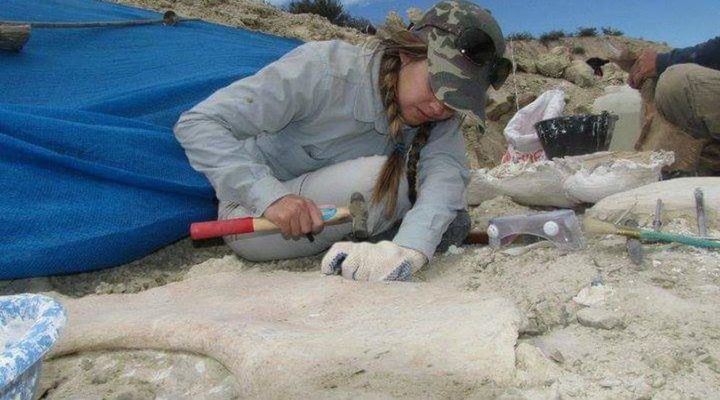BIOLOGICAL AND HEALTH SCIENCES
Scientists discover that 70 million years ago birds, lizards and crocodiles shared their nest site
For the first time, one CONICET researcher revealed that some past animals used the same nest site to lay and take care of their eggs.
Nowadays, in the province of Santa Fe, the Tupinambis teguixin burrows the nest of the caiman and lays its eggs to take advantage of the shelter and protection. In Patagonia, some lizards use the nest of the seagulls to lay eggs. This trend of animals of different species that share the colony without harming each other has antecedents in the present but there was no evidence of it in the past so far. Scientific Reports published the first record of an approximately 70-million-year-old mixed vertebrate eggshell assemblage. Mariela Fernández, CONICET assistant researcher of the ‘Institute on Biodiversity and Environment’ (INBIOMA-CONICET).
In 2011, fossil remains of a bird colony of Enantiornithes, a lineage that does not exist currently. Two years later, an world expert in bird evolution, researcher Gareth Dyke, invited Fernández to participate in the study.
The researcher had done her PhD on dinosaur’s reproduction and learnt to analyse some features of genetically determined species in the remains of eggshells. “When Dyke contacted me, I was in Spain doing a research stay. So he sent me samples of rock from the site where there were egg shells, supposedly all of birds. We made some thin cuts to observe them carefully in the microscope. Then we took some samples and put them in the Scanning Electron Microscope (a technique that allows producing high resolution images). We were surprised to see that there were not only birds. There were egg shells of gekcos: some small lizards, eggshells of crocodiles, and a fourth type of bird shell that we could not yet identify,” states de scientist.
To conduct the study and infer that this group of Enantiornite nested in the same colony as other species, the research team focused on detailed taphonomic studies, that is, they analyze the processes of fossilization, which includes a statistical method frequently used by specialists on seabirds. “In the case that we do not find whole eggs, or preserved in three dimensions, if 60 per cent of the eggshells are found with the concavity up, and 40 per cent with the concavity facing down, the experimental studies show that those eggs were not moved over time. Therefore, all those shells found in this way and of different species, allow us to infer that these birds nested with other animals,” the researcher concludes.
For the researcher, this finding that shows different nesting species together, could also provide more information to understand in the present this behavior of nest commensalism in which several animals share the same space without harming each other.
References:
Fernández, M. S., Wang, X., Vremir, M., Laurent, C., Naish, D., Kaiser, G., & Dyke, G. (2019). A mixed vertebrate eggshell assemblage from the Transylvanian Late Cretaceous. Scientific reports, 9(1), 1944. https://doi.org/10.1038/s41598-018-36305-3
By Alejandro Cannizzaro
